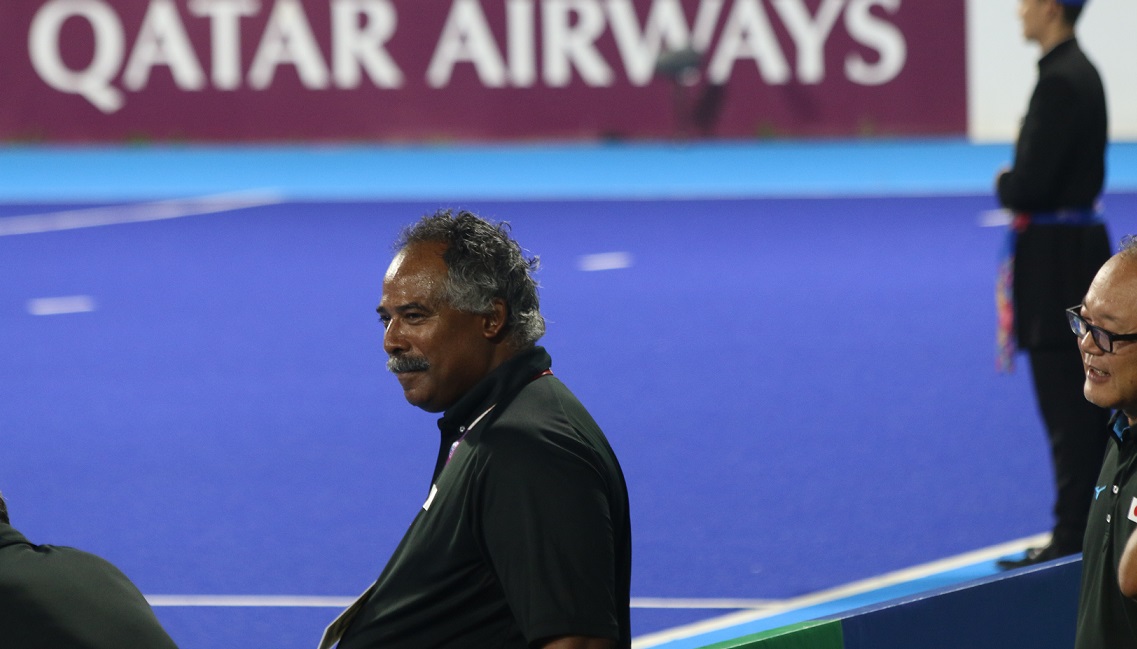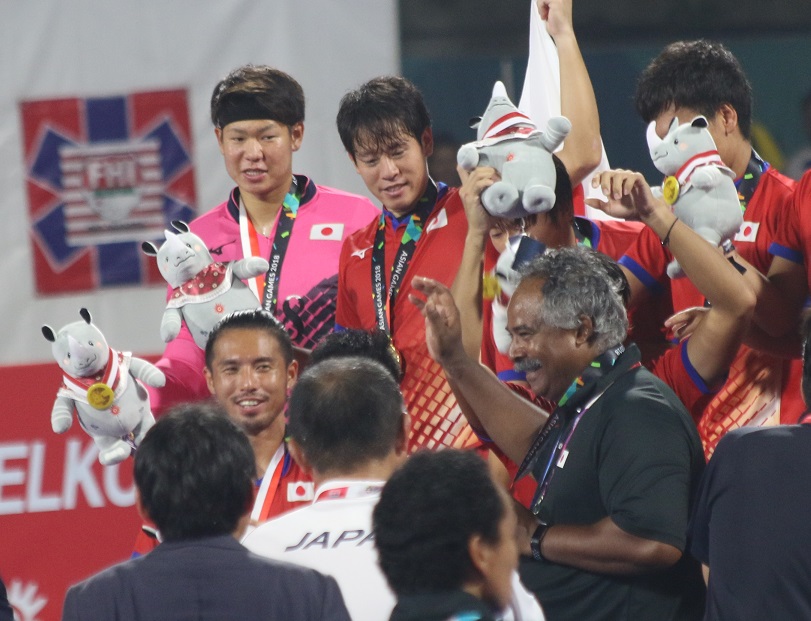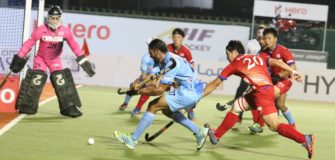Siegfried Aikman: big names don’t give big results
Share
This coach doesn’t shout from the sidelines. He doesn’t know much of Japanese anyway. To communicate with the players, he uses a translator. Even when you hear the English of the translator, the accent is very different, and at times, not even decipherable.
So, how does the Coach of the Japanese team, a Dutchman Siegfried Aikman, make the players play his strategy?
He teaches them how to think!
He believes in making a player responsible for their own development and decision-making is the key to improve the game of each one of them.
He quotes an example, ‘We don’t stop the ball. We receive the ball.’ Now what’s the big difference between the two? The former is just an act and the latter being a complete concept which proceeds another one.
He emphasizes that if you just teach about stopping the ball, the player will look back at you once he/she has done that because that is what you taught him/her.
The Japanese team under his aegis, is encouraged to discuss and ask questions, thereby making players think what they could have done or will do differently.
“In a game, where the stress-levels are typically high, players end-up doing things which they have never ever done before. How does that happen? Can I bring in a change at that level? Change comes from awareness. If a player is aware of what exactly happened last time when a given situation came and then there is a discussion on how to change the outcome next time, we can bring in a change in their thinking,” suggests a calm and composed Aikman.
The Asian Games Gold medal, a couple of months back, hasn’t made him boastful. Staying put on ground, he says, “All I got back in Japan was a handshake and a ‘Thanks’. I am well-aware that even though we have won the Gold-medal, we are not yet the best team in Asia.”
The man who never seems to be in a hurry or worry, watches all the matches but never takes notes during the game. He says he has 100% coverage of everything, thanks to the videographer. Whatever interests him, he has it after each game.
An absolute favorite for everyone around in the stadium, Aikman comes across as a friendly and a warm person who offers fruits to all the people sitting around him. Siggy, as addressed by the Japanese team, is a blend of various cultures. With a maternal-side ancestor from India, the Asian Games Gold-medalist Coach, was born in Surinam, moved to Netherlands and has been coaching Japan for more than a year now.
“I had coached Japan back in 2008-11 as well until I ran into opinion-difference with the then President of the Federation. Now when I am back, the interesting part is, all my staff-members are the players whom I had trained during my previous stint,” Aikman tells with great enthusiasm and joy.
The coach who was always fascinated by Japanese and Indian cultures, follows Indian Hockey closely.
None of the Asian teams he feels develops a ‘Coaching Structure’ but instead focusses on ‘big-names’ to deliver the short-term goals for them. Moreover, the big-names are typically coaches who themselves are at least a few years behind in modern Hockey. So, hiring big-names really doesn’t produce big-results because others are progressing faster than Asian Hockey.
Another factor he feels is that Asian-players lack employability skills so the only way they can keep their living going for them is by playing more and more Hockey. That is why it makes it increasingly difficult for them to quit. Aikman relishes the career-graph and contribution of Sardara Singh to Indian Hockey but feels that it was the right-time for him calls it quits. One should always leave on a high, he opines.
In contemporary Hockey, whereas the rolling substitutes, especially for the Forwards, come-in every 3-minutes, the coach foresees a future that will witness this number come down to as much as 1.5 minutes. He points out to a few scientific studies to further his claim. By 2024, he feels the game would be more dependent on video-analysis and will turn biomechanical.
While watching the match between India and Korea, as we overhear the words exchanged between the Indian players, Siggy explains to his Assistant-Coach, the interpretation of some crucial words that the Indian players exchange with each other while playing: ‘shaabaash’, ‘upar’, ‘neeche’. The young former player from Japan hears him with fascination and notes it down, diligently. Who knows, that little, seemingly insignificant information, at some critical moment, might turn out to be useful for the players.
When asked about what does he do when things are too negative around him? He responds instantly, “You always have the choice,” Aikman draws a solid-circle at the center of the page and asks me back, “What do you see?”
He continues, “White is the positive and Black is the negative. While remembering the white, you can work towards reducing the black-one, thus increasing your white-zone. You, and no one else, makes that choice.”
Aikman is a man of positivity and never appears stressed out with the game of his team.
If he can implement his ideas with the Japanese team, it’s only a matter of time, Japan will be rubbing shoulders with the powerhouses of World-Hockey.





